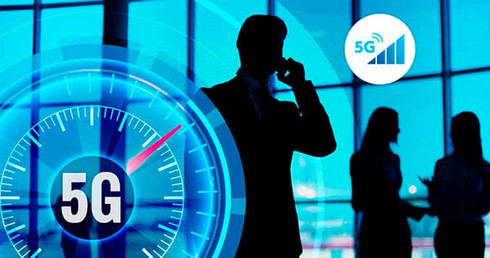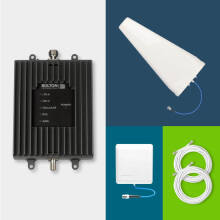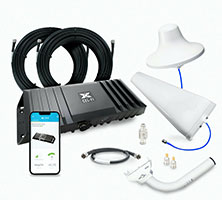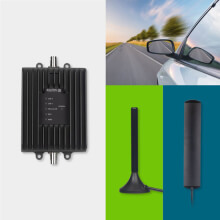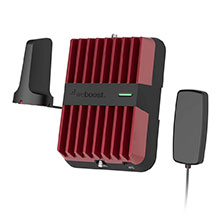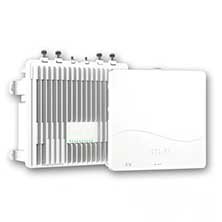5G Signal Boosters - 17 Things You Should Know

Table of Contents
- What is 5G?
- What makes 5G so special?
- How does 5G work?
- What about 4G LTE?
- When is 5G coming?
- Are Verizon's or AT&T's 5G services real or marketing hype?
- What's the difference between 5G and 5G-ish?
- When will 5G-compatible cell phones be ready?
- What are 5G's frequency bands?
- What will happen to 4G LTE?
- What is 5G E?
- What about weak 5G E signal?
- 5G E Cell Phone Signal Boosters
- 5G E Signal Boosters for Vehicle
- 5G E Cell Phone Signal Boosters for Commercial Buildings
- 5G Cell Phone Signal Boosters
- 5G Antennas
Take advantage of our system design and installation services. Learn more or call us for a free consultation: 1-800-969-8189.
What is 5G?
5G stands for fifth generation, meaning it is the fifth generation of mobile connectivity. For a basic recap, 1G is mobile voice (this would be the brick phones popular with yuppies and 1980s villains in movies in the 1980s,) 2G is mobile voice and text (the smaller brick kind that killed pagers in the late 90s and early aughts), 3G is voice, text, and data (we can send photos!), and 4G LTE (we can watch YouTube and do all the other things!).
5G is the next Big Thing.
It is primed to replace 4G LTE standards and predicted to improve everything from machine to machine communications, mobile download speeds that will beat the pants off the fastest land-based ISP, driverless vehicles, and connect your smart home, smart phone, any other Internet of Things item, seamlessly and with no noticeable latency.
Phones are first order of business for the improvement as more consumers own one (or several) and they play such a prevalent role in our day-to-day lives.
What makes 5G so special?
The data speeds. As smart mobile devices increase in usage by consumers, the bands available to use get more crowded. This is a lot like trying to cram too many cars on a one lane road. As far as cellular use is concerned, this results in longer download times and an increase in dropped calls. A movie in high definition might take ten minutes to download at the fastest current 4G LTE speeds; 5G is projected to take less than a second!
How does 5G work?
In order to make 5G work, several technologies will be employed to ensure the fast, stable signal consumers need. These include millimeter waves, small cells, massive MIMO, full duplex, and beamforming.
Millimeter Waves:
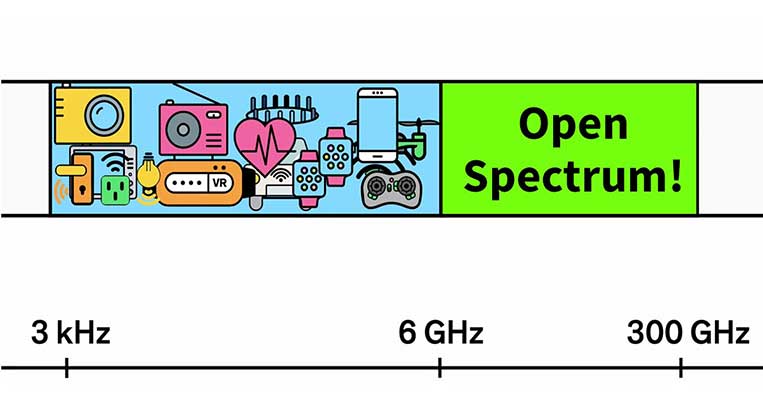
In order to get the higher speeds necessary for 5G, the new infrastructure will support a higher frequency that is much faster but can only travel short distances (for the same reasons AM radio stations can be accessed much farther away from a broadcasting tower than an FM station).
So engineers are looking at using millimeter waves. Originally used in radar and satellite systems, millimeter waves are radio waves that operate at very high frequencies.
These are measured in lengths of millimeters, whereas the current ones operate in tens of centimeters. Cellular technology as we know it depends on radio frequencies that travel long distances. The downside to these is that 1) they have an even harder time penetrating building materials, and the waves are so small that rainy weather and plant cover interrupt the signal even more than current RF used in current cellular service.
Fortunately these can be fixed by using a technology already in service: small cells.
Small Cells
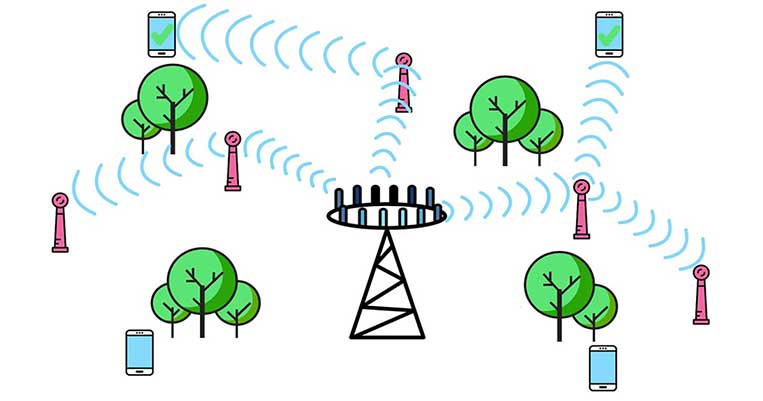
Small cells are basically miniature cell towers. They have the advantage of being portable, energy efficient, and portable, so they can be installed and moved to areas that need more coverage, such as for major sporting events with huge influxes of tourists. Another advantage is that they can be easily installed on existing structures, such as telephone and light poles, and added to buildings without being an eyesore.
They will also use take advantage of a new kind of antenna: massive MIMO.
Massive MIMO
Standing for multiple-input multiple output, MIMO means wireless systems that use more than two transmitters and receivers. Massive MIMO is this on an epic level: current 4G base stations use a dozen ports; 5G base stations will use up to one hundred. This means an over twenty times increase in a single base station’s capacity.
Beamforming
Lots of users and lots of data mean lots of interference. Beamforming solves this problem by acting like a traffic light. It works by finding the fastest path for data to be received, and reduces interference for massive MIMO. For millimeter waves, beamforming can strengthen the signal and make blockage by objects less of an issue.
Full Duplex
This technology allows 5G transceivers to send and receive data concurrently, over the same frequency, which current base stations are incapable of doing. The technology was previously simply too cumbersome to employ, but new improvements to the transistors have finally made this technology able to be used.
What about 4G LTE?
Never fear, interoperability will be built-in. The companies working on 5G modems want to make sure the new technology will be seamless for consumers and providers, and product trials should ensure a fairly smooth transition between standards. That being said, no phone built yet is truly 5G compatible, so save your money and don’t make any new phone purchases for awhile if you can help it.
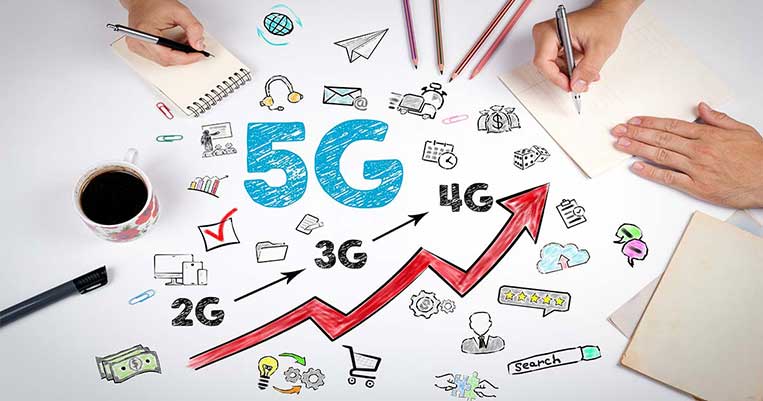
When is 5G coming?
First things first. For the past four years, 5G has had a lot of hype and not a lot of execution, with various industry giants teasing about the possibilities and yet bringing nothing to the table, as some of the necessary technology to deliver such high speed connectivity with next to no lag was still in R&D being finessed.
As of last year’s Mobile World Congress, 5G standards hadn’t even been set in place yet, and no product on the market can even handle the speeds industry experts have been predicting. Now that has all changed.
Back in December 2017, the 3rd Generation Partnership Project, which governs cellular standards, said that they had agreed on the first specification for 5G: it will cover 600 and 700 MHz bands and 50 Ghz millimeter-wave end of the spectrum. The 5G standard has yet to be finalized. This allows manufacturers of phones to create products that are actually compatible with the new standard.
As with any new product rollout, this causes a bit of a problem: AT&T had already made an official statement shortly before the MWC, announcing that 5G will become available in three American cities: Atlanta, Dallas, and Waco. This announcement led Sprint to claim they will have 5G available in six cities, including Dallas, L.A., and Chicago.
T-Mobile blew everyone out of the water by saying they will have 5G services available in 30 U.S. cities by the end of the year. Verizon has stayed mum on the matter, but is expected to stay competitive with its rivals. AT&T has launched what it calls "5Ge" which has proven to be faster than regular 4G, but not actually 5G. Other carriers have made it clear that this is simply a more advanced version of 4G LTE, and have denounced AT&T for its deliberate misuse of the term.
Is this just marketing hype or what?
Essentially, yes. As far as consumers are concerned, 5G is still an ethereal unicorn. 5Ge, while faster, doesn't hit anywhere near the expected speeds of what will eventually be 5G. Rome wasn’t built in a day, and neither will the infrastructure needed to support 5G services. While AT&T consumers in the testing market will be able to use a Wi-Fi hotspot to access 5G, the phones supporting 5G speeds for Sprint and T-Mobile won’t even be available to purchase until next year.
This sort of marketing hype should sound very familiar for anyone who had to wait for 4G supported infrastructure to roll out last time (and people in rural areas who are still waiting to this day).
Why the wait?
Building the infrastructure. All the technology we mentioned earlier has to be built, installed, tested, and perfected. You can’t travel on roads that don’t exist yet, and you can’t make calls over a nonexistent network.
Are Verizon’s or AT&T’s 5G services real or marketing hype?

Unfortunately, the answer isn’t clear-cut.
It’s starting to look like like the fake 4G vs real 4G debacle when 3G on steroids was passed off as 4G. History repeats itself, with AT&T's new 5Ge really just being a stronger version of 4G being touted as 5G.
Unfortunately, the global 5G standard as set by the 3GPP—an international organization composed of the world’s leading telecom service providers, hardware manufacturers, and other conglomerates— has yet to be finalized.
However, milestones along the way (3GPP Release 15 & 16) have established general baselines which carriers like Verizon and AT&T are using as a benchmark to build to their own proprietary 5G services. These services are frameworks that will lead USA to the global 5G specification set by the 3GPP.
So the answer is 5G-ish, sorta-5G, pre-5G—more precisely, the first phase of 5G but not the real 5G that will hopefully come out in 2020.
What’s the difference between 5G and 5G-ish?
Think of 5G deployment much like building a house:
- Site preparation
- Foundation
- Framing
- Roofing
- Doors & windows
- Plumbing
- Electrical
- Drywall
- Counters & cabinets
- Floors
- Finishing touches (Whew!)
All those steps lead to a completed house, so technically each step is a “house.”
5G-ish is more like those early steps, laying down the technological foundations. For example, Verizon’s 5G Home claims to have peak speeds of 1 Gbps while the global 5G standard is expected to have speeds ranging from 1 to 20 Gbps depending on location, frequency band, and usage.
Verizon 5G Home’s best speed barely meets the minimum requirement of 5G’s proposed speed range. The company expects real-world speeds at 300 Mbps down. While it’s much lower than 1 Gbps, it still rivals most fiber-to-home internet cable speeds, which will encourage more customers to join the cord-cutting movement.
Early adopters of Verizon’s 5G Home don’t have to worry about incompatible or outdated equipment when the global 5G standard comes later this year, or in 2020. The company will update all the equipment free of charge for the first year to meet specification when the time comes.
When will 5G-compatible cell phones be ready?
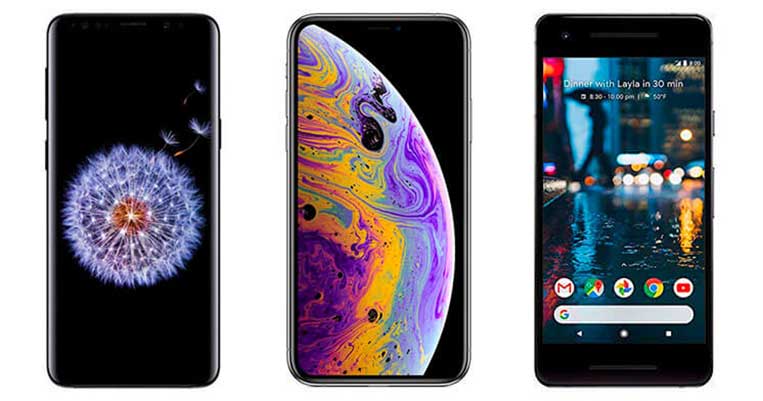
Later in 2019, without a doubt.
Qualcomm, a leading telecom designer of mobile chipsets, has already released a 5G modem that 36 global carriers and smartphone makers tested back in 2018.
Expect early adoption from Android devices later this year. Apple has a history of waiting on mainstream adoption, so the first 5G-compatible iPhone won’t be available until at least 2020 or 2021.
As for growing pains, the first generation of 5G phones will most likely be carrier-locked because of the variety of different frequencies each carrier is using to deliver 5G. Current hardware has limitations to support them all. However, 5G carrier-unlocked phones will happen after the technology is available.
What are 5G’s frequency bands?
| Carrier | Type | Bands |
|---|---|---|
| AT&T | Fixed wireless | 28/39 Ghz |
| Verizon | Fixed wireless | 28 Ghz |
| T-Mobile | Fixed wireless | 28/39 Ghz |
| Mobile | 600 Mhz | |
| Sprint | Mobile | 2.5 Ghz |
The 5G category is split between two use cases: fixed wireless for home and mobile for roaming.
5G fixed wireless uses millimeter wave (mmWave) above 24 GHz. mmWave bands are great at transmitting large amounts of data; however, they are limited by line-of-sight transmission, so the slightest blockage can disrupt service. Therefore, it’s the best candidate for fixed wireless but not mobile.
The FCC has already approved 28 GHz, 37 GHZ, and 39 GHz for licensed bands with 64 to 71 GHz for unlicensed bands.
5G mobile uses sub-6 GHz bands which are currently being used by all 2G, 3G, and 4G cellular services today. This allows for broad 5G coverage leveraging technology already invested in existing LTE deployments.
What will happen to 4G LTE?
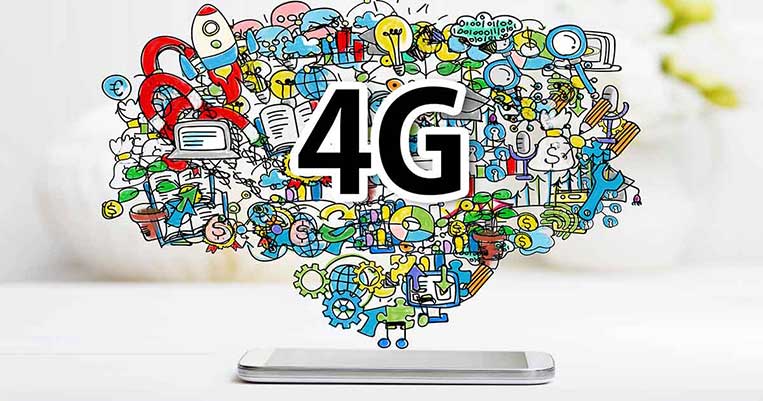
4G LTE is not going anywhere anytime soon.
While 5G comes to major urban markets in the early part of the 2020s, full nationwide buildout to rural areas won’t most likely happen until 2030.
In fact, 4G LTE is still being built out and won’t peak until 2028. Improvements like LTE-Advanced and LTE-Advanced Pro support data rates up to 3 Gbps which is 5G-like speeds. Many carriers have stated the importance of 4G LTE coverage until 5G fully matures, which some predict to be 2035 to 2040.
So yes, 4G LTE will be around for at least another decade or two.
What is 5G E?
It stands for 5G Evolution, and it's pure marketing.
AT&T in all its power and wisdom has seen the opportunity to pass off its newer 4G technology, 4G Advanced, as 5G E. Other carriers have denounced them, with Sprint going so far as to file an injunction against them for false advertising.
Until the case clears, though, AT&T will continue to use the term 5G E, which provides a lot of confusion for the average consumer.
What about weak 5G E signal?
We can help with that.
See, because 5G E is really a 4G band, cell phone signal boosters that boost 4G signal will work just fine on them.
Only certain phones can register 5G E speeds, including:
- iPhone XR
- LG V40 ThinQ
- iPhone XS Max
- iPhone XS
- Samsung Galaxy Note9
- iPhone X
- iPhone 8 Plus
- Samsung Galaxy S9+
- iPhone 8
- Samsung Galaxy S9
- Samsung Galaxy Note8
- LG V30
- Samsung Galaxy S8
- Samsung Galaxy S8+
- Samsung Galaxy S8 Active
Furthermore, 5G e is only available in select areas of the following 12 cities:
- FL: Jacksonville
- GA: Atlanta
- IN: Indianapolis
- KY: Louisville
- LA: New Orleans
- NC: Charlotte, Raleigh
- OK: Oklahoma City
- TX: Dallas, Houston, San Antonio, Waco
If you're suffering from poor 5G E signal in one of these areas, and have a compatible phone, we can help.
5G E Cell Phone Signal Boosters
Bolton Victory Yagi/Panel Cellular Signal Booster
Overview of the Bolton Victory Yagi/Panel:
- For Small to Medium Size Homes and Offices
- Covers Up to 4,000 Sq Ft
- Up to +72 dB Gain
- Up to 26 dBm Uplink Power
- Supports All Carriers Simultaneously
The Bolton Victory Yagi/Panel cellular booster is our top pick. Under optimal conditions, it can blanket up to 4,000 sq ft with stronger cell reception, which is more than enough for most people. Featuring up to 26 dBm uplink and up to 72 dB gain, it has incredible reach and can significantly amplify your existing weak cellular signal.
Strategically paired with the Bolton Quicksilver Outdoor Yagi Antenna, it works wonders in remote locations. This antenna is designed to draw in signals from cell towers up to 5 miles away. Distance from the signal source will no longer be a problem.
While capable of boosting multiple carriers at the same time, you may only receive improved cell reception from one or two carriers. This is because the antenna is directional and needs to point at the closest cell tower that’s powered by your preferred carrier. If boosting multiple carriers is more important than coverage area, consider the Bolton Victory Omni/Panel Cellular Signal Booster.
| Pros: | Cons: |
|
|
Cel-Fi by Nextivity GO X
Overview of the Cel-Fi GO X:
- For Large Homes and Offices
- Covers Up to 15,000 Sq Ft
- Up to +100 dB Gain
- Amplifies One Carrier at a Time
The GO X by Nextivity is the most powerful cell phone signal booster available. It’s designed with up to 100 dB gain, the highest on the market. This unit can seriously make all your signal woes disappear. The caveat is that it can only boost one carrier at a time. Though, through the Cel-Fi WAVE app, you’re able to switch between carriers as you need.
Super customizable, you have multiple outdoor antenna options to really maximize the amplifier's reach to your closest cell tower.
Rated to cover up to 15,000 sq ft, it's best for large homes and small businesses. Indoor coverage will vary based on the strength of your outside signal.
| Pros: | Cons: |
|
|
SureCall Flare 3.0
Overview of SureCall Flare 3.0:
- For Small Homes or Spot Coverage
- Covers Up to 3,000 Sq Ft
- Up to +72 dB Gain
- Up to 26 dBm Uplink
- Supports All Carriers Simultaneously
- 2-in-1 Amplifier/Indoor Antenna Combo for Ease of Installation
The SureCall Flare 3.0 cellular booster packs a signal punch for the price. It includes a Yagi antenna, which is ideal for rural areas, and a sleek amplifier. The indoor antenna is built into the amplifier, making the Flare 3.0 one of the easiest units to install yourself.
With up to 72 dB gain and 26 dBm uplink, it offers good amplification and reach to distant cell towers for a booster of its kind. While power is similar to that of the Bolton Victory, the Flare 3.0 offers less coverage and a less powerful Yagi antenna. It’s rated to cover 3,000 sq ft, but will likely only provide multi-room to spot coverage.
| Pros: | Cons: |
|
|
5G E Signal Boosters for Vehicle
Bolton Velocity Vehicle
Overview of the Velocity Vehicle:
- For Cars, Trucks, and RVs
- Up to 50 dB Gain
- Support Multiple Carriers Simultaneously
- Easy Install
The Velocity Vehicle is carefully crafted to keep drivers and passengers connected on-the-go. It’s built with the highest gain and uplink. No matter where you drive, as long as there is a sliver of cellular signal, the Velocity Vehicle will keep all devices connected.
This particular model comes with a magnet mount antenna, making it ideal for your everyday cars, SUVs, and trucks. Installation is a breeze. For semis and heavier-duty trucks, consider the Velocity Trucker. It includes a tough OTR outside antenna featuring great reach, heavy-duty construction, and whistle-free wrap.
| Pros: | Cons: |
|
|
Cel-Fi by Nextivity GO M
Overview of the GO M:
- For RVs, Cars, Trucks, and Boats
- Up to 65 dB Gain
- Powerful Single-Carrier Solution
- Easy Install
If you need the strongest possible signal you can get, the Cel-Fi GO M is one of the best cell phone boosters for RVs, cars, trucks, and boats. Only able to amplify one carrier at a time, it offers highest possible gain of up to 65 dB.
The outdoor antenna will differ depending on which type of vehicle you will be using. The configuration for cars includes a magnetic mount antenna, boats a marine antenna, trucks and RVs an OTR trucker antennas. Each outdoor antenna is designed to give you the highest possible boost.
You can use the Cel-Fi Wave app to check your signal strength, gain, and signal quality as well as update software.
| Pros: | Cons: |
|
|
weBoost Drive Reach
Overview of the weBoost Drive Reach:
- For RVs, Cars, Trucks, and Boats
- Up to 50 dB Gain
- Support Multiple Carriers Simultaneously
- Easy Install
The weBoost Drive Reach is weBoost’s most powerful in-vehicle cell signal booster for cars, SUVs, trucks, and minivans. Features increased uplink than previous generations, users can get signal that is 2x farther from towers for twice the signal strength. Dropping calls and losing navigation connection will all be a thing of the past while driving on remote roads or highways.
Cellular antennas will vary depending on the Drive Reach configuration that best meets your needs.
We wouldn't recommend anything weaker than the Drive Reach for rural areas.
| Pros: | Cons: |
|
|
5G E Cell Phone Signal Booster for Commercial Buildings
Cel-Fi QUATRA 4000
Overview of the Cel-Fi QUATRA 4000:
- For Large Commercial Spaces
- Covers Up to 200,000 Sq Ft
- Up to +100 dB Gain
- Support Multiple Carriers Simultaneously
The Cel-Fi QUATRA 4000 is an extremely strong industrial signal booster. It is made for large industrial buildings but can also be used in very large homes. It has many features, including remote signal monitoring and tweaking. It boosts all major carriers at a higher rate of power than any of its competitors, making it a no-brainer option if you’re looking to cover a very large space. It is our top recommendation for commercial buildings in rural or low-signal areas.
The Cel-Fi QUATRA 4000 is scalable based on how much area you’re trying to cover. It uses Network Units and up to 6 Coverage Units to cover up to 200,000 square feet.
This cell signal booster requires a professional to install and design. We offer professional installation services with our in-house team of experts. This service is for commercial buildings only.
| Pros: | Cons: |
|
|
5G Cell Phone Signal Boosters
Much like with phones, there are no true 5G boosters on the market yet. But watch this space - we will update it when products launch.
5G Antennas
The Long Ranger – Ultra High Gain Parabolic Antenna by Bolton Technical
- Directional outdoor antenna
- All Cellular and WiFi bands
- The Highest Continuous Gain Antenna on the Market - up to +28dB gain!
- Mount Sold Separately
The Long Ranger by Bolton Technical is the most powerful antenna on the market for cellular signal, and works with 5G, 5G E, and 4G LTE, as well as WiFi networks. If you're looking to future proof yourself for the rise of 5G, there is no better option out there.
Not only that, but The Long Ranger is 6x more powerful than other antennas that come with your cell phone booster kit. By putting more directional gain on your antenna, you’re able to increase your signal quality, reach farther to the cell tower, and dramatically increase your booster’s performance by capturing more signal.
A win-win. Better performance and future-proofing. With its robust construction, it's something you can hang onto for many years.
Any other questions? Drop us a line on the comments below.
Contact Us
SignalBoosters.com is a leading provider of cellular and WiFi signal boosting solutions & installation.
Contact us today for a comprehensive solution.Interested in Learning More? Check Out Our Cellular Info Hub / WiFi Info Hub

